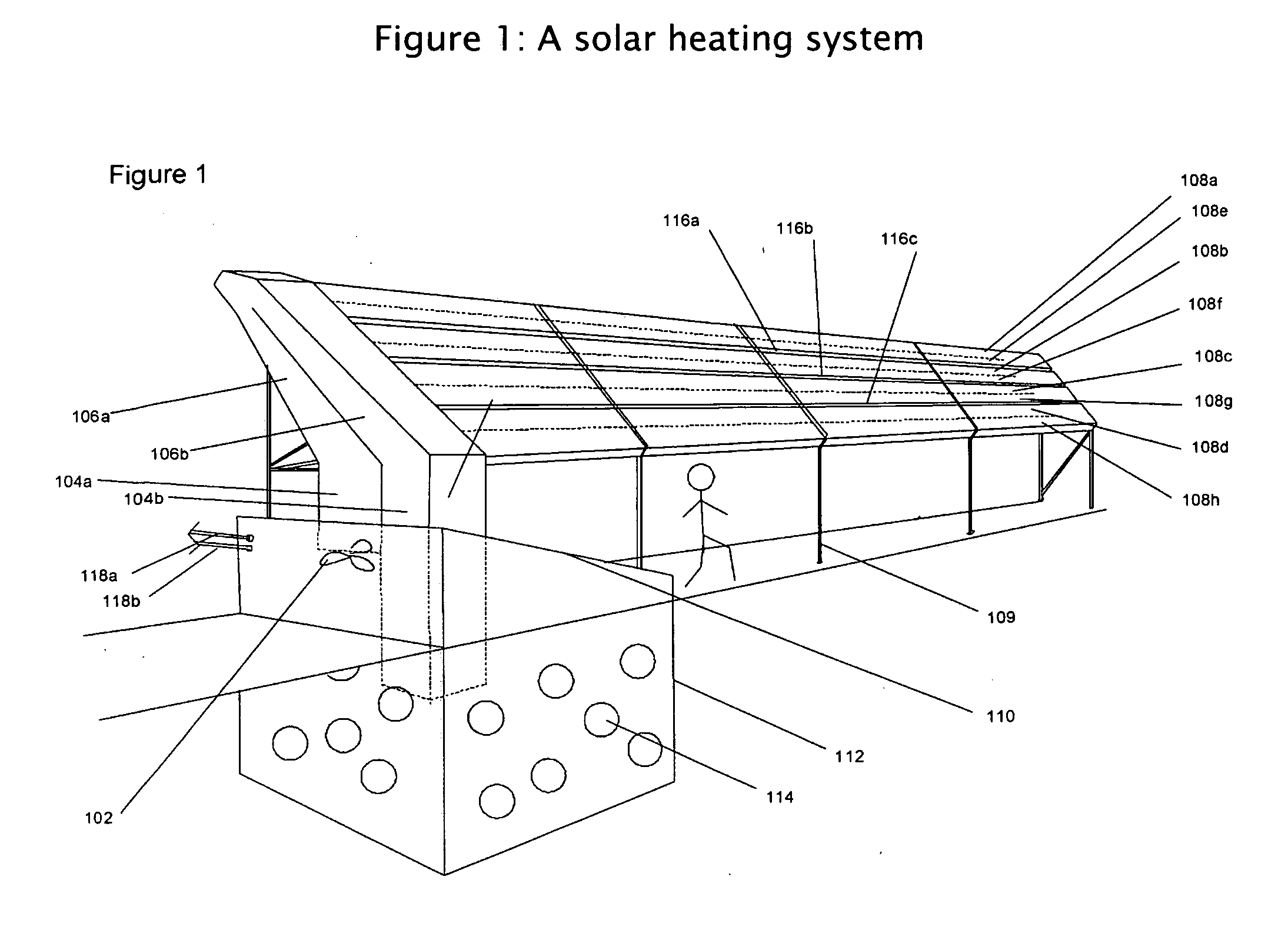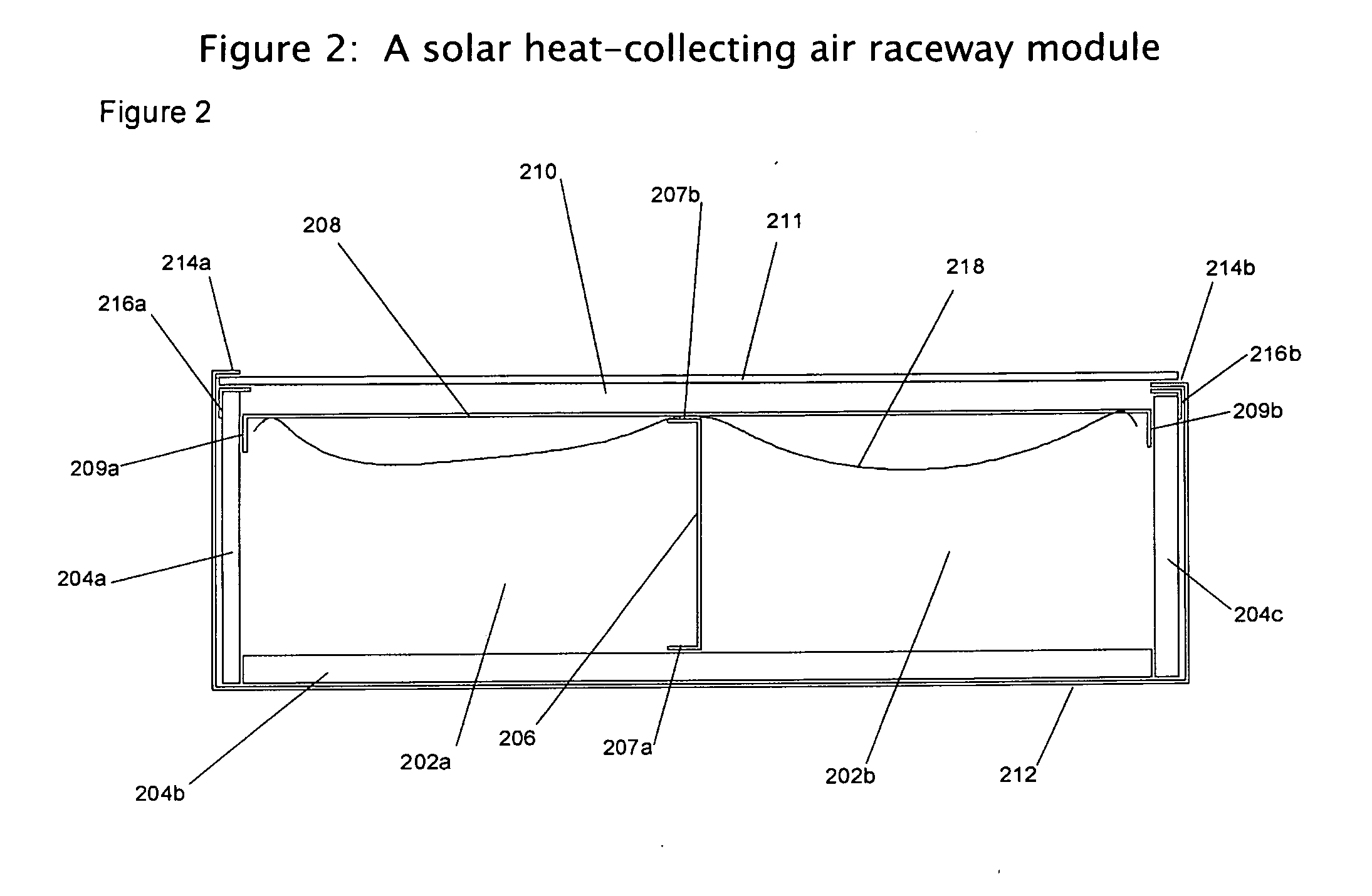Solar Heat Collection and Storage System
a solar energy and storage system technology, applied in solar heat storage, lighting and heating apparatus, greenhouse gas reduction, etc., can solve the problems of inherently more expensive construction of plumbing without cracks than ductwork with small cracks, fluid in outdoor pipes can leak, and the number of inherent engineering problems have been discovered. , to achieve the effect of reducing system air friction and saving electricity
- Summary
- Abstract
- Description
- Claims
- Application Information
AI Technical Summary
Benefits of technology
Problems solved by technology
Method used
Image
Examples
Embodiment Construction
[0030]In the embodiment shown in FIG. 1, air is blown by a fan (102) up a main insulated supply duct (104a), through the insulated supply duct in a manifold (106a) into one of several horizontal raceways (108a-d) mounted on a frame (109), back through a return raceway (108e-h), back through the insulated return duct in the manifold (106b), back down the insulated main return duct (104b), through the roof (110) of an insulated rock bed heat storage building (112), through the rock bed (114) and back to the fan. The dividers between adjoining supply and return ducts may be, but don't necessarily have to be, insulated dividers.
[0031]In this embodiment the air raceways are separated from each other by wind gaps (116a-c), designed to spill some of the uplift and lateral forces of extreme wind gusts. Regular small air gaps in a solid surface, constituting perhaps 10% of the surface's area, will reduce wind-generated overpressures on that surface by perhaps 40%.
[0032]In this embodiment, pi...
PUM
 Login to View More
Login to View More Abstract
Description
Claims
Application Information
 Login to View More
Login to View More - R&D
- Intellectual Property
- Life Sciences
- Materials
- Tech Scout
- Unparalleled Data Quality
- Higher Quality Content
- 60% Fewer Hallucinations
Browse by: Latest US Patents, China's latest patents, Technical Efficacy Thesaurus, Application Domain, Technology Topic, Popular Technical Reports.
© 2025 PatSnap. All rights reserved.Legal|Privacy policy|Modern Slavery Act Transparency Statement|Sitemap|About US| Contact US: help@patsnap.com



